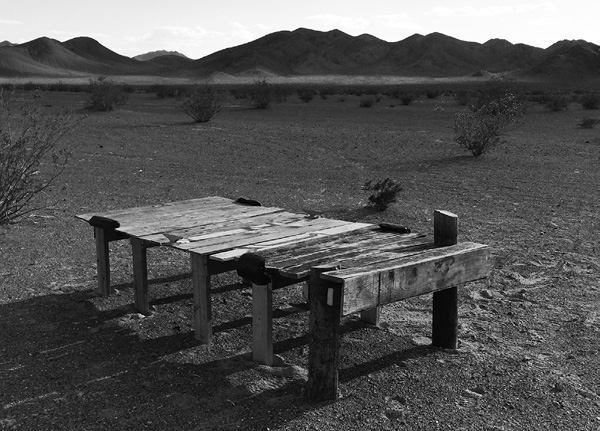
PIER / PLATFORMS IN THE SOUTHWEST
first performed on April 26, 2016
Various deserts and city centers en route to and throughout the Southwest, USA
performed ongoing for sixty days in 2016
KATIE KEHOE
Toronto, Canada
182667499k182667499t182667499@182667499k182667499a182667499t182667499i182667499e182667499k182667499e182667499h182667499o182667499e182667499.182667499c182667499o182667499m
katiekehoe.com
pierplatforms.com
PIER / PLATFORMS IN THE SOUTHWEST
KATIE KEHOE
“PIER / Platforms in the Southwest” is durational performance action wherein I traveled alone by car from Toronto, Canada to the United States’ Southwest over a period of sixty days during which time I salvaged materials from dumpsters and alleyways, which I then used to build a pier. The pier was designed and built so it could be disassembled and fit in my car, enabling me to move it from one location to another. Over the sixty days I performed over 25 desert installations and a handful of urban installations, documenting each widely with photo video and by transmitting the performance action through social media and maintaining a blog. The first three weeks of the project were driven by the use of the pier as a platform for interaction; I invited people to participate by spending a day with me to salvage materials, build a section of the pier, or sit on it with me. In the latter five weeks, I mostly worked independently, traveling through very remote areas, camping, installing the pier in deserts, and documenting these performance actions with photo and video.
“PIER / Platforms in the Southwest” bridges social practice, performance action, and site-specific installation and was directly informed by my earlier piece, “One Year and Twenty-Four Days of Fishing,” for which I carried a fishing rod and wore rubber boots everywhere for over a year. In “One Year and Twenty-Four Days of Fishing,” the fishing rod prompted spontaneous reactions from people, who, more often than not, were random strangers. When people asked where I was going and what I was fishing for, I would simply tell them where I was going and what I was going to do there—I didn’t tell people it was a performance project. At times, conversations that began with the fishing rod ended hours later, building a sense of connection between us, while at other times, people thought I was being a smart-ass and just didn’t want to tell them where I was really fishing. Moving to Toronto in my mid-20s, I was exposed to Darren O’Donnell’s “Social Acupuncture,” before it was specifically named as that, and I started producing work within this climate—driven to move outside of conventional performance streams and treat conversation as content while working outside the conventional frame of the gallery and museum.